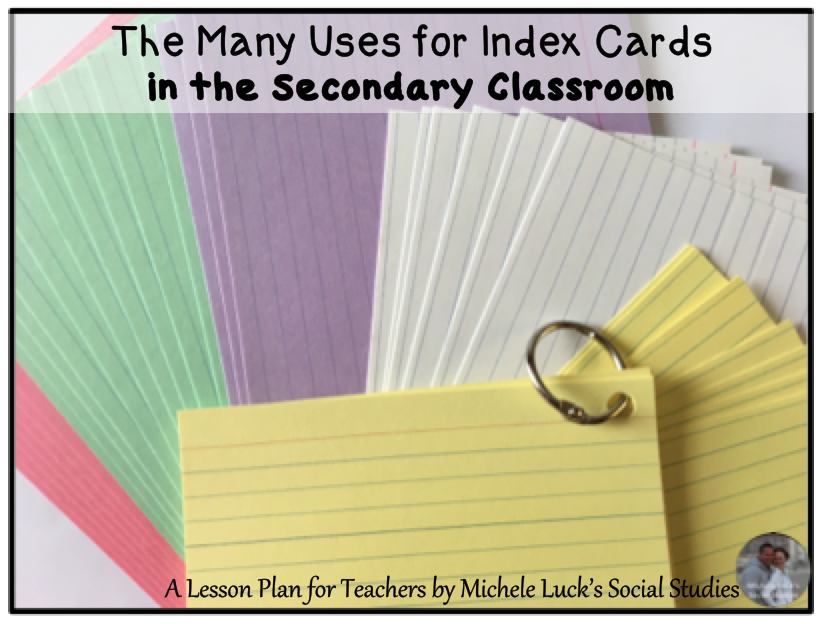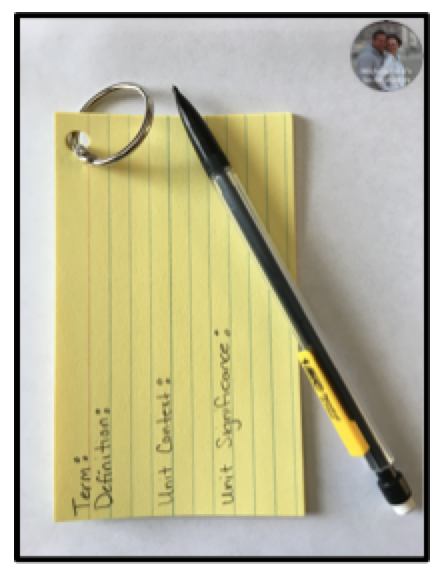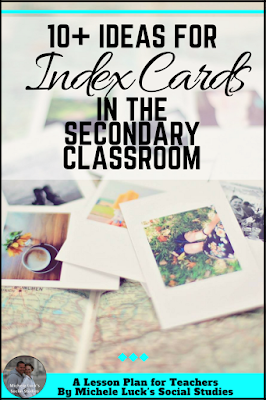In the old days, Index Cards were one of the most valuable resources for a research-based classroom. But with the introduction of Interactive Notebooks and then technology tools, the index card became a thing of the past. That shouldn’t be the case. After all, index cards have many uses, and all of them can help students to learn skills vital for academic development.

Tried and True Uses for Index Cards
If you ever took an advanced or AP course in high school, you most likely learned to gather, record, and organize facts onto practical, white index cards. Think about the skills associated with that task…
- Fact Collection – keep in mind that processing information for retention is a multi-step process. Using index cards for basic fact collection helps students learn the skills of analysis and decision-making.
- Chronological Thinking – learning before and after or cause and effect can be challenging tasks in the Social Studies classroom. Writing out dates with simple annotations on index cards and allowing students to place the events in chronological order can help them to identify those changes.
- Categorization – using varied colors of index cards, or simply adding identification markers (stars, hearts, crosses…) to cards can help students learn to group like terms, facts, or characteristics. As students practice this skill, they will learn to evaluate information at a more in-depth level, increasing their knowledge and analytical skills.
- Vocabulary Development – students have long written terms and definitions onto index cards for memorization. Take that a few steps more to have students apply context, unit significance, and appropriate categorization of terms.
- Game Play – practice does make perfect, and playing memory games can not only help to practice the terms or the content of study, but it also stretches the muscles in the brain and sparks activity to help enrich the brains capacity for learning. Use index cards to create a number of different game formats with your content.
- Thought Organization – while thinking maps have become all the rage, so can index card maps. Use them to jot down thoughts or opinions and create a web on the board or on the floor, aligning common thoughts or comparing the opposites.
- Reading Cards – as students read, index cards can be the easiest way to jot down significant plot events, character developments, and theme concepts. Keep the cards stored in the book pages to help chart reading development and book analysis.
- Research – for classes where Genius Hour has become a way of life, index cards can help students from the brainstorming stage to product completion. Start with ideas, eliminate down to common thread, use cards to develop ideas, record facts and additional content through research, and then organize for product development.
- Think-Pair-Share – read through this post for 10 different ways to implement THINK-PAIR-SHARE activities in your classroom and then use the index cards to allow students to record the activity development.
- Assessment – for daily formative assessment, index cards can be the quickest, easiest to handle, and easiest to grade way to go! Give each students a card each week, and have them add their exit response to the card at the end of each class period. Collect the cards as students leave the room. Grade. Repeat! At the end of the week, hole-punch the cards and give them to students to keep in their notebooks for assessment prompt review (and text preparation)!

There are probably hundreds of other ideas for using index cards in the classroom. This is just the tip of the iceberg! What are your ideas?

Happy Teaching!